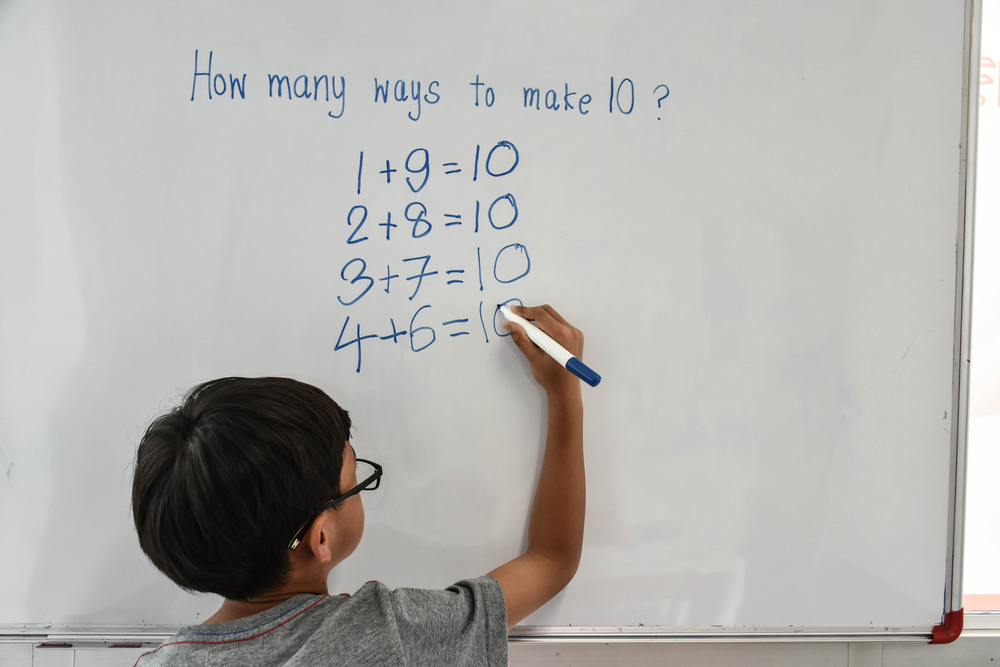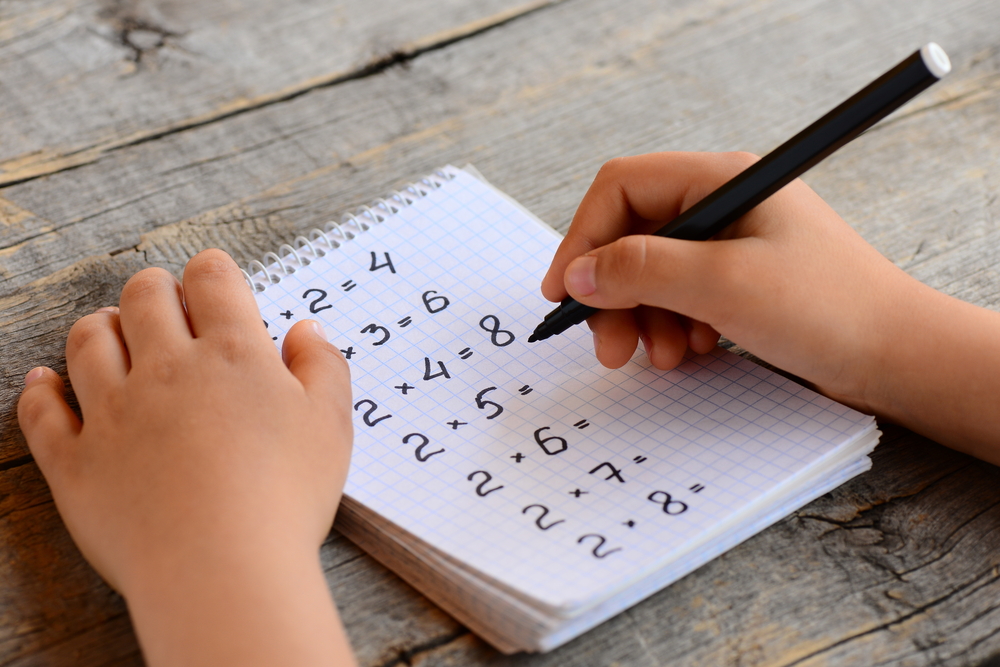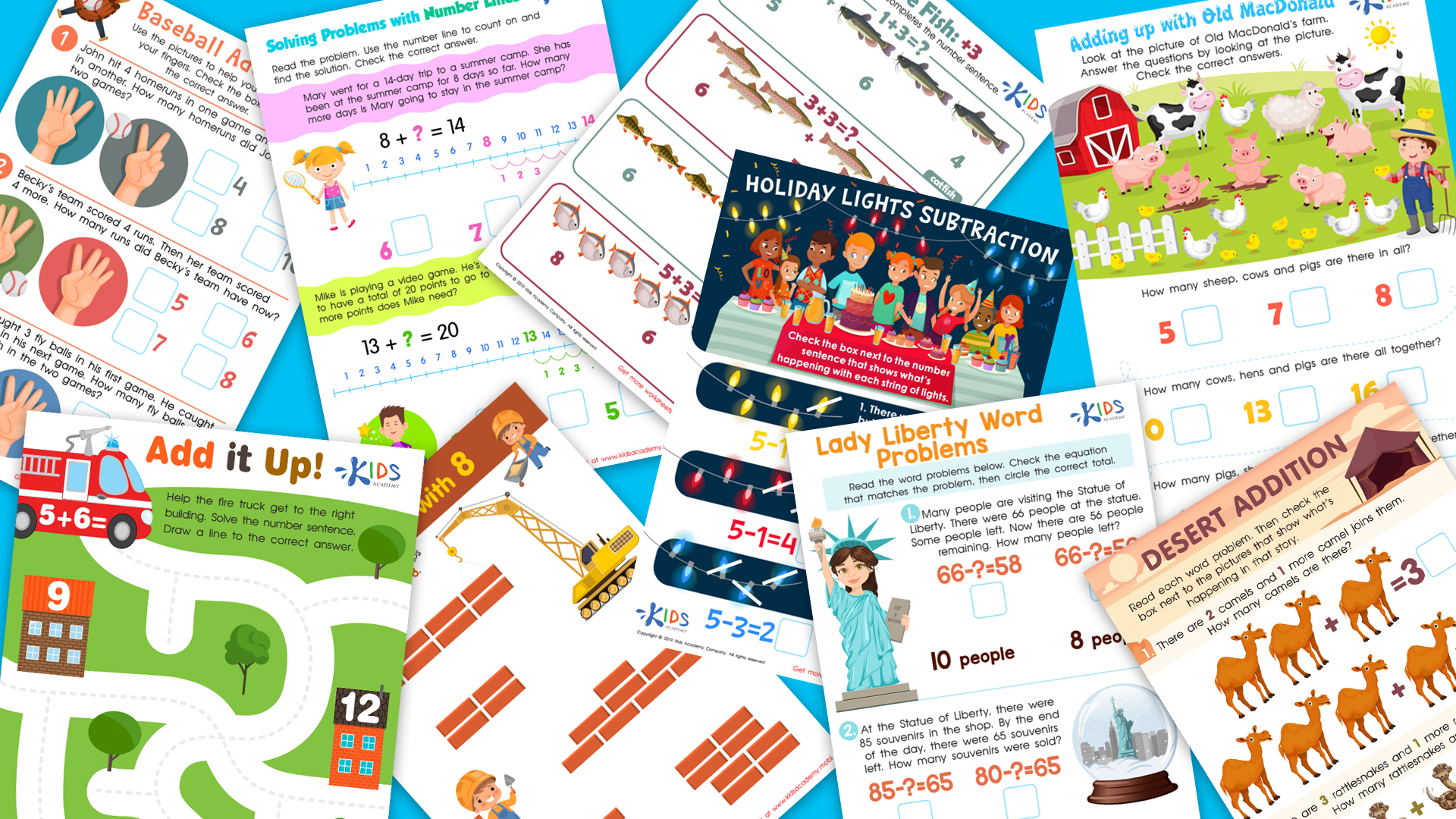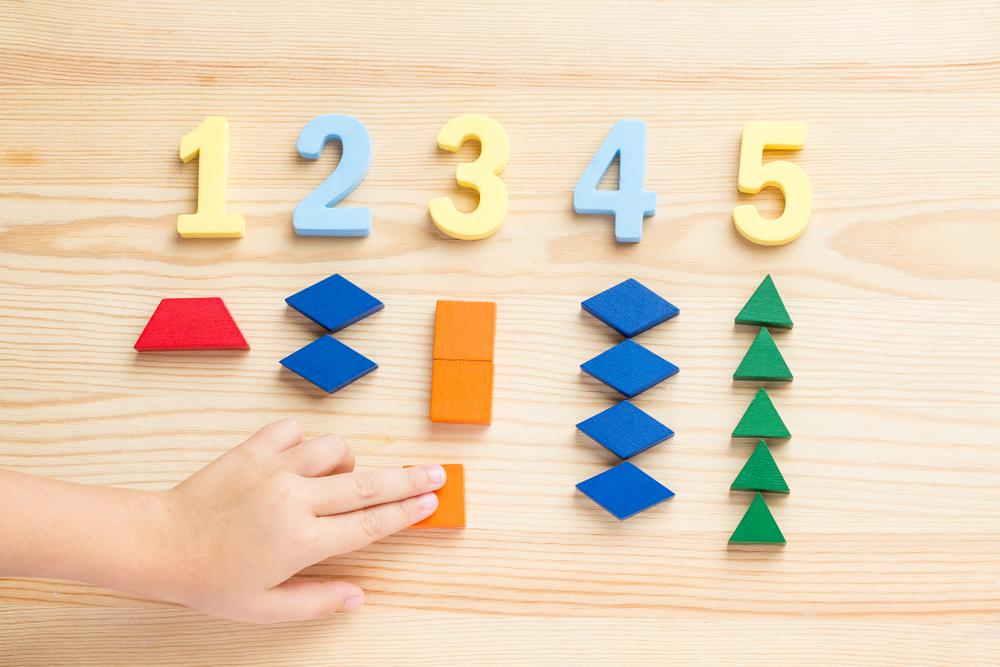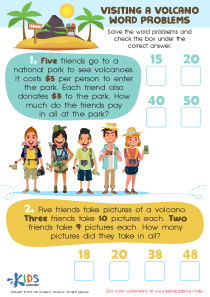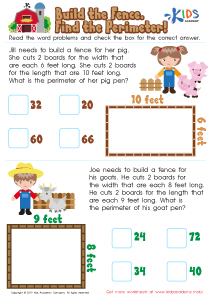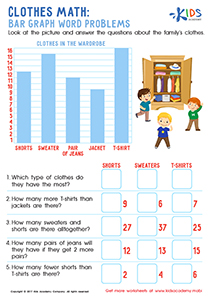Normal Addition and Subtraction Word Problems Worksheets for Ages 6-8
29 filtered results
-
From - To
Explore our Normal Addition and Subtraction Word Problems Worksheets designed specifically for children ages 6-8! These engaging worksheets help young learners develop essential math skills through real-life scenarios, making addition and subtraction fun and relatable. Each worksheet features age-appropriate problems that challenge students to think critically and apply math concepts in everyday situations. Perfect for reinforcing classroom learning or as home practice, our printable resources are both educational and enjoyable. Foster confidence and competency in math while nurturing a love for learning. Discover the joy of problem-solving with our expertly crafted worksheets today!
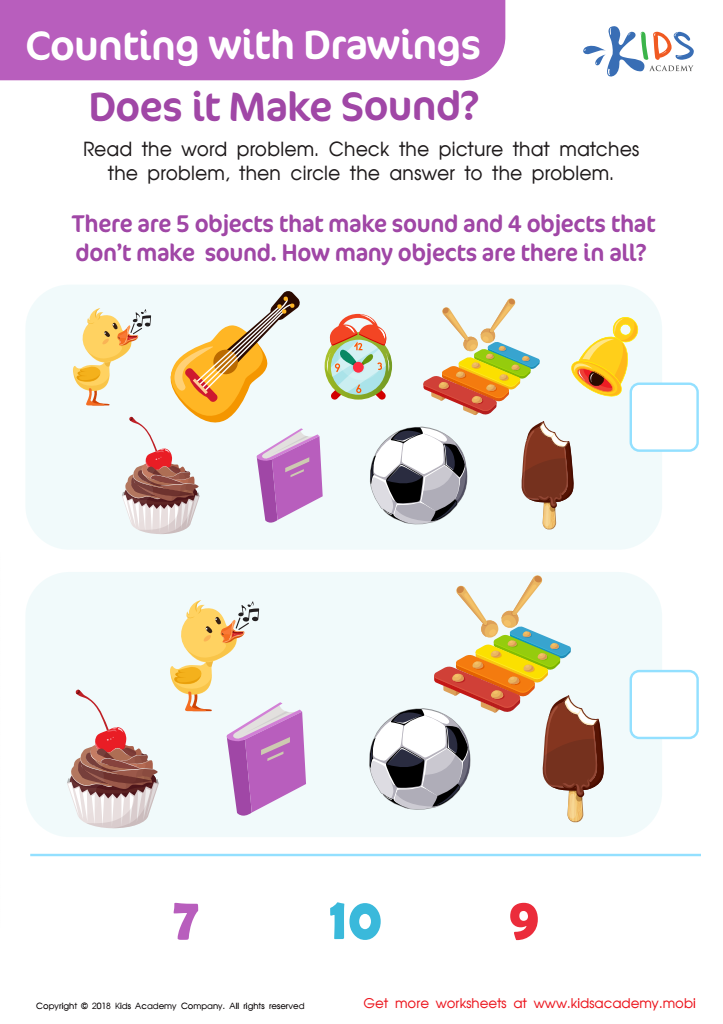

Counting With Drawings. Does It Make Sound? Worksheet
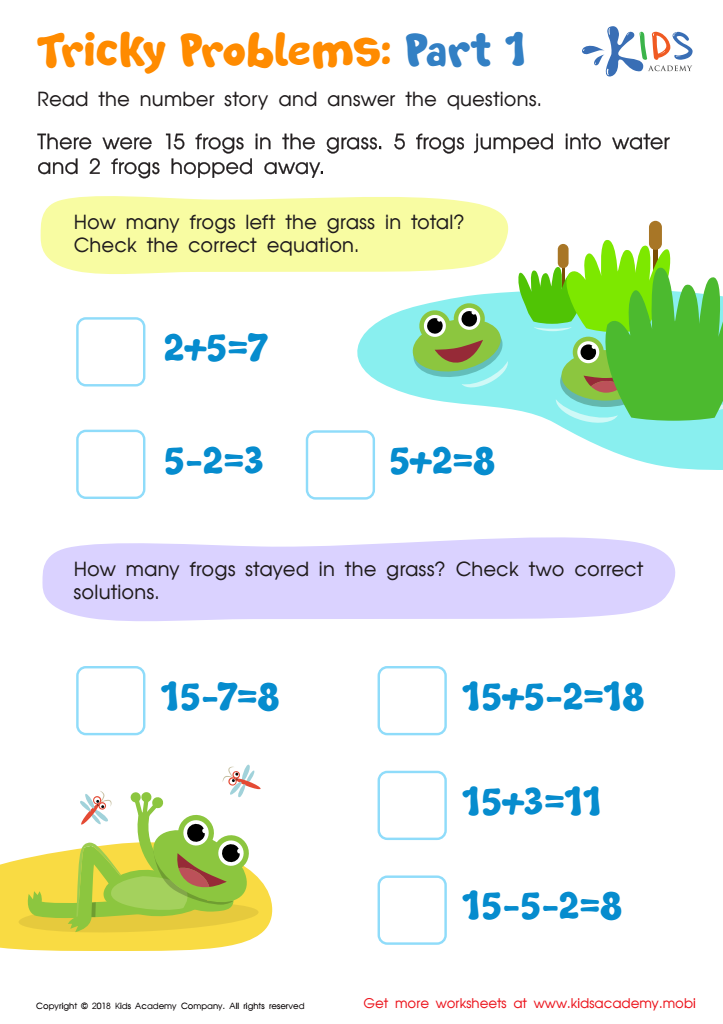

Tricky Problems Worksheet: Part 1
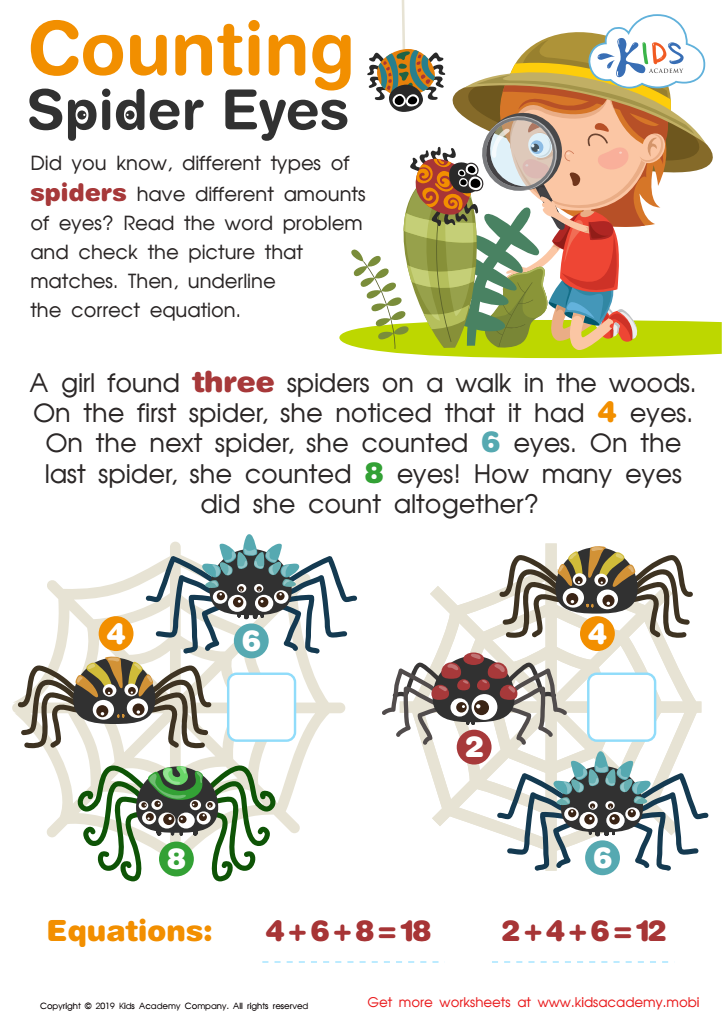

Counting Spider Eyes Worksheet


Enrichment -2 Step Word Problems Worksheet
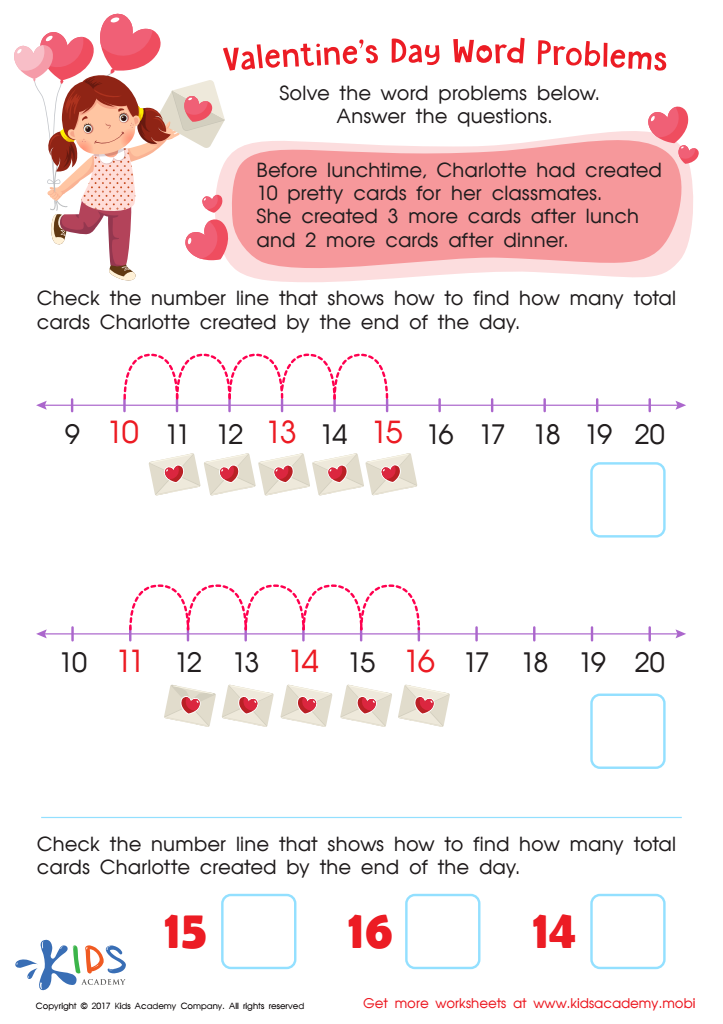

Valentines Day Word Problem Worksheet


Fruity Problem Solving Worksheet
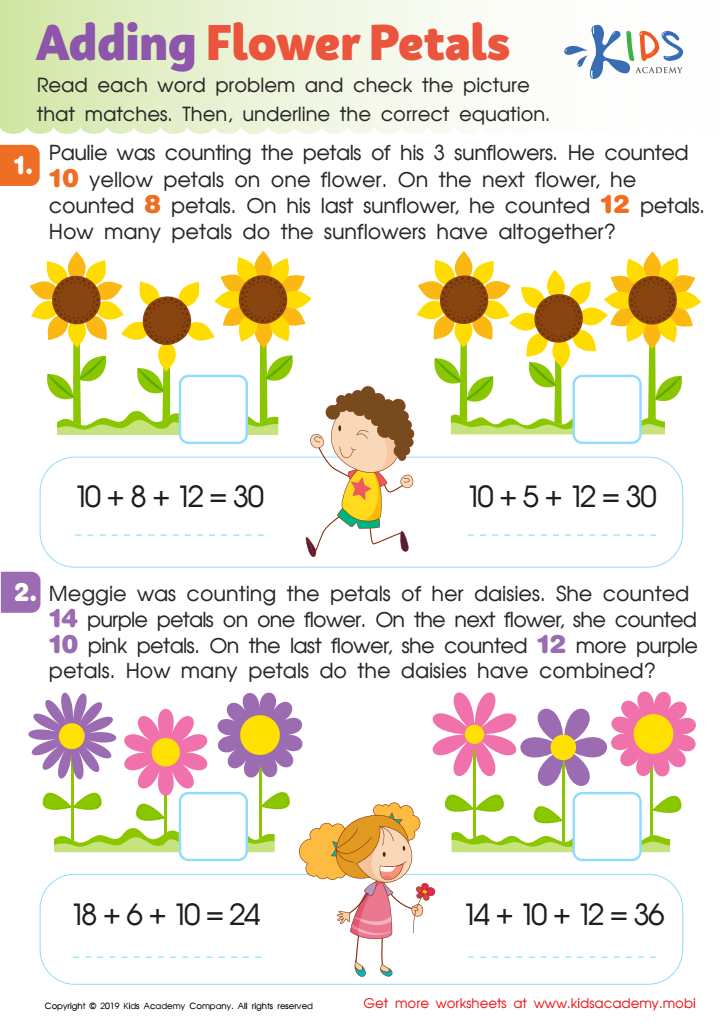

Adding Flower Petals Worksheet


Garage Sale - More yhan Worksheet
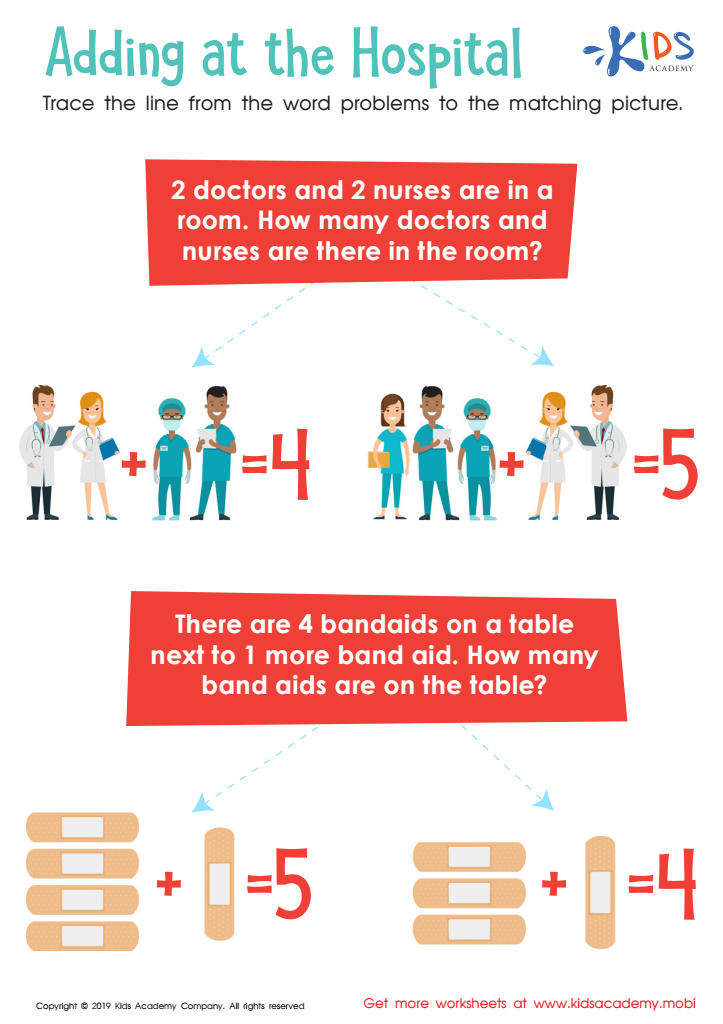

Adding at the Hospital Worksheet
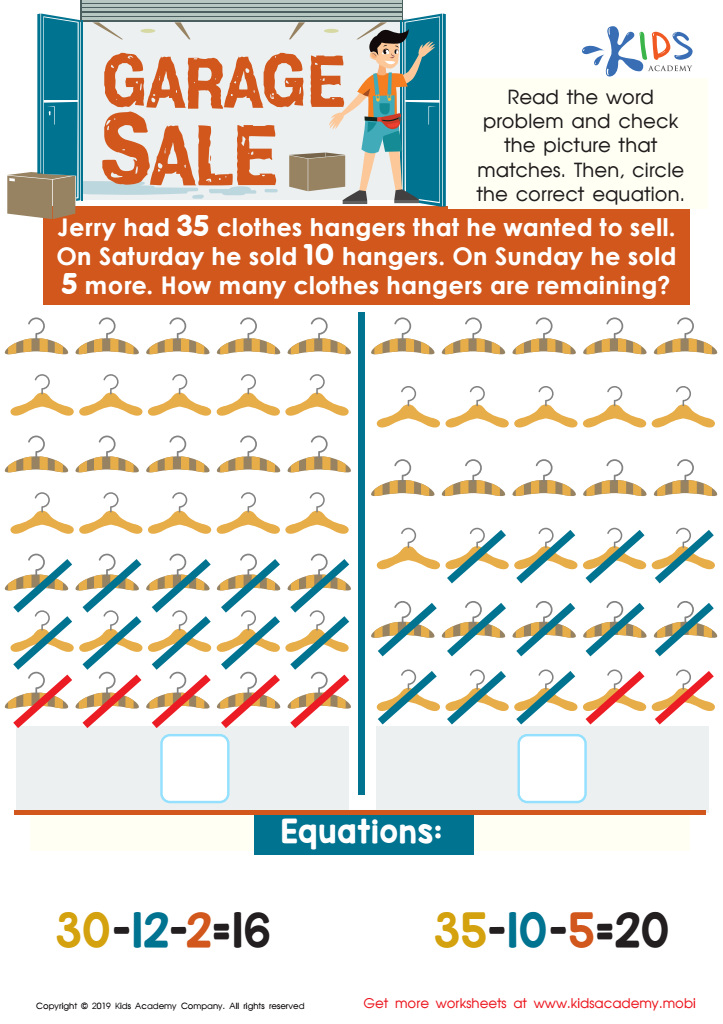

Garage Sale Worksheet
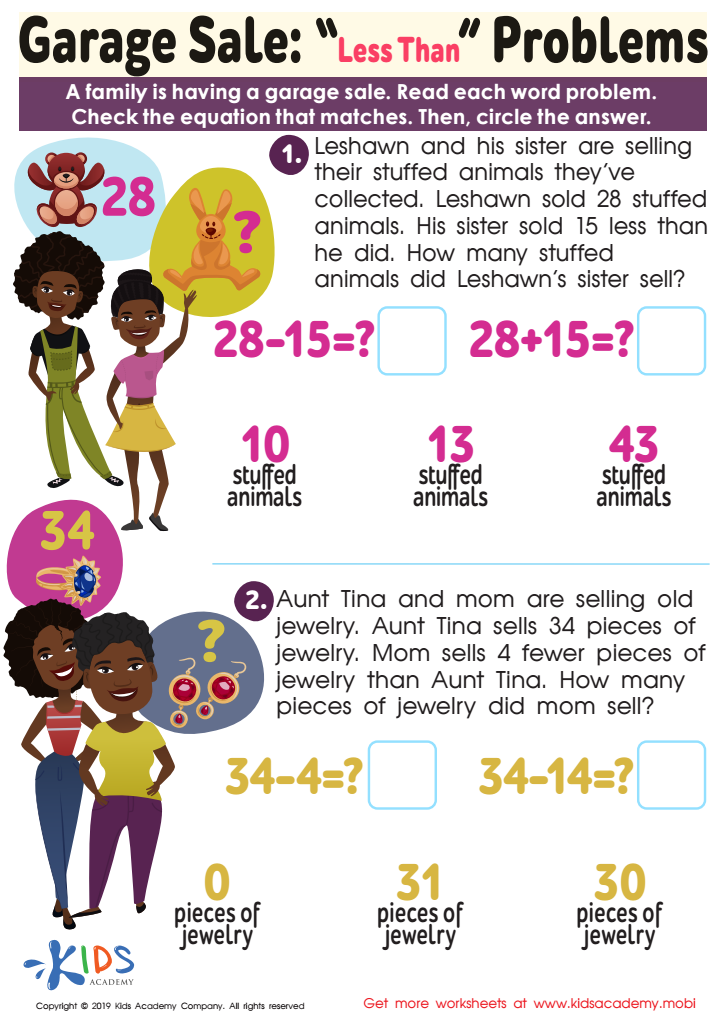

Garage Sale Less Than Worksheet
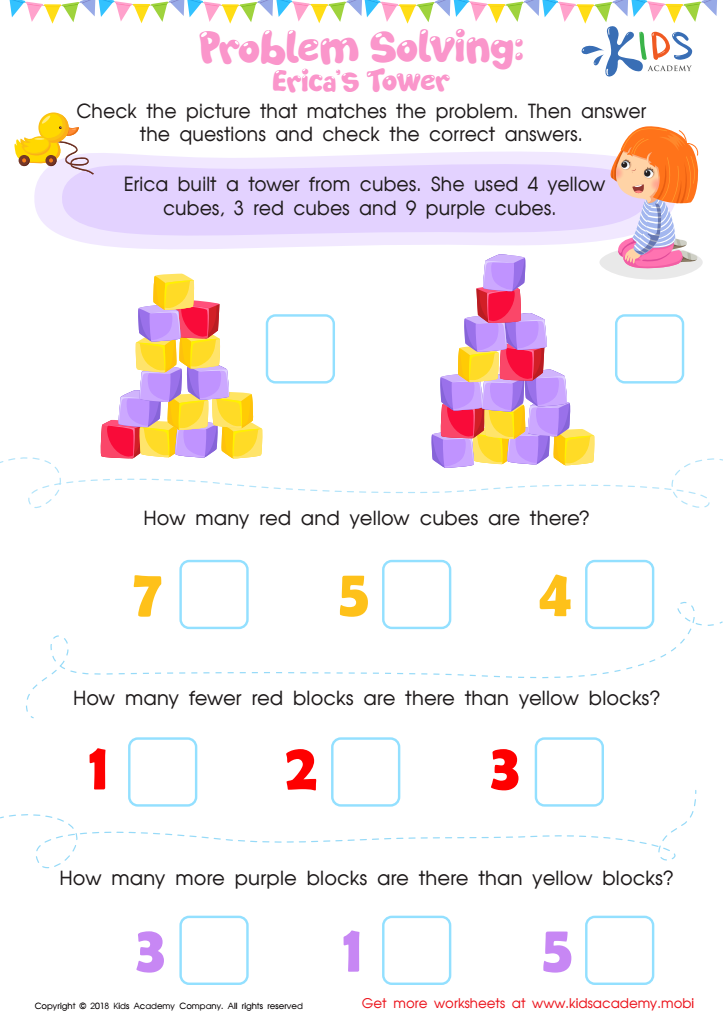

Problem Solving: Erica's Tower Worksheet
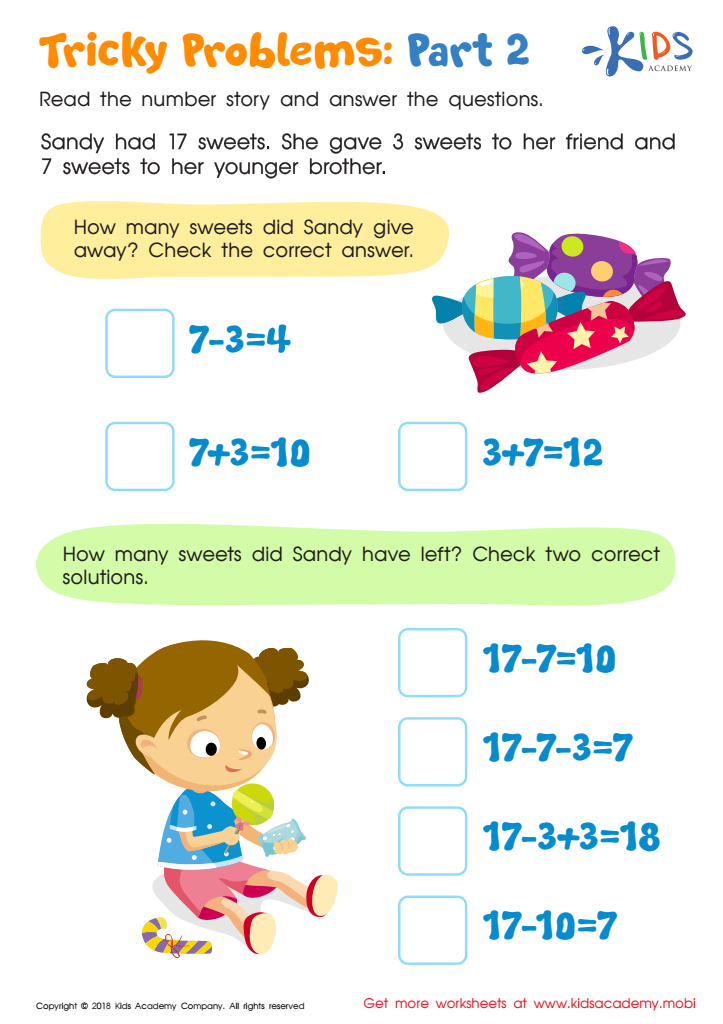

Tricky Problems Worksheet: Part 2
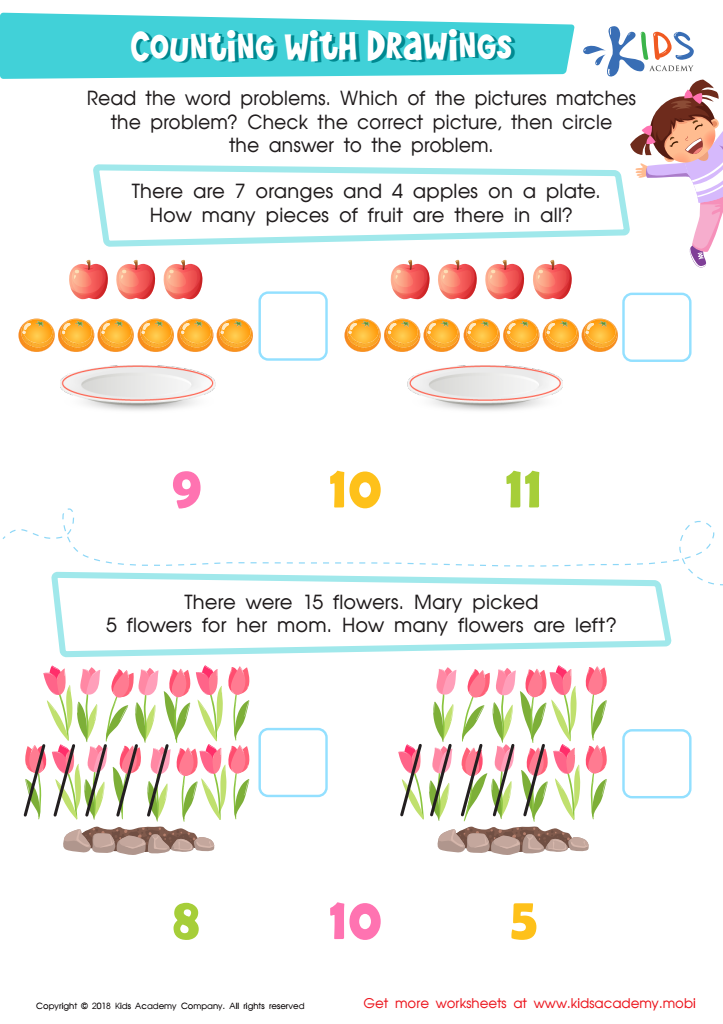

Counting with Drawings: Fruits & Chocolates Worksheet


Match the Word Problems Worksheet
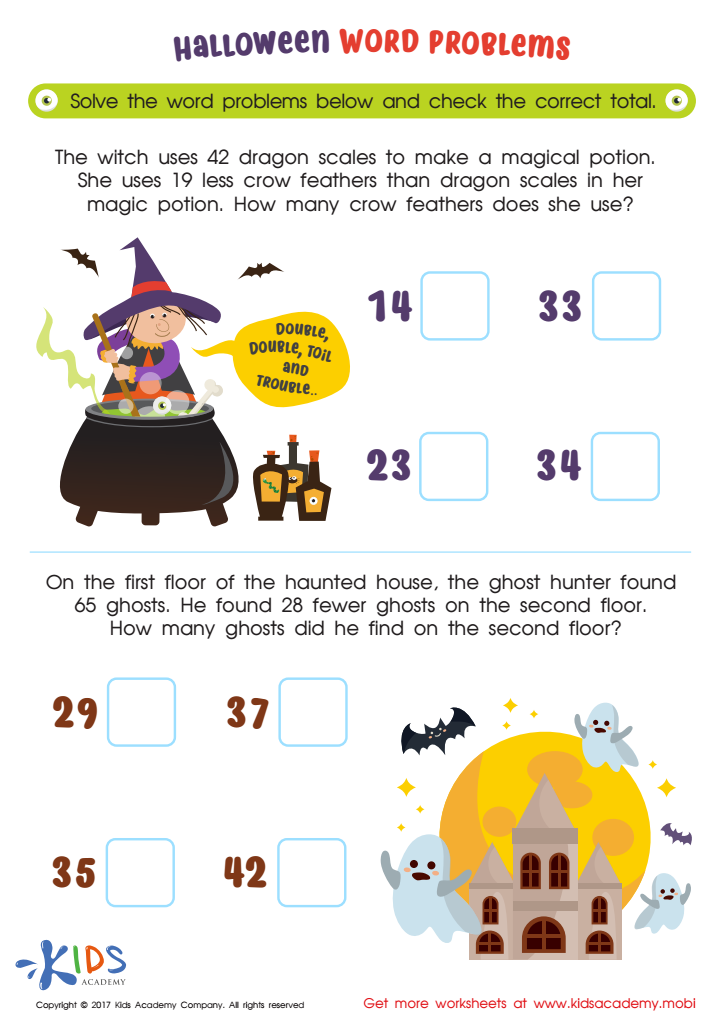

Halloween Word Problems Printable
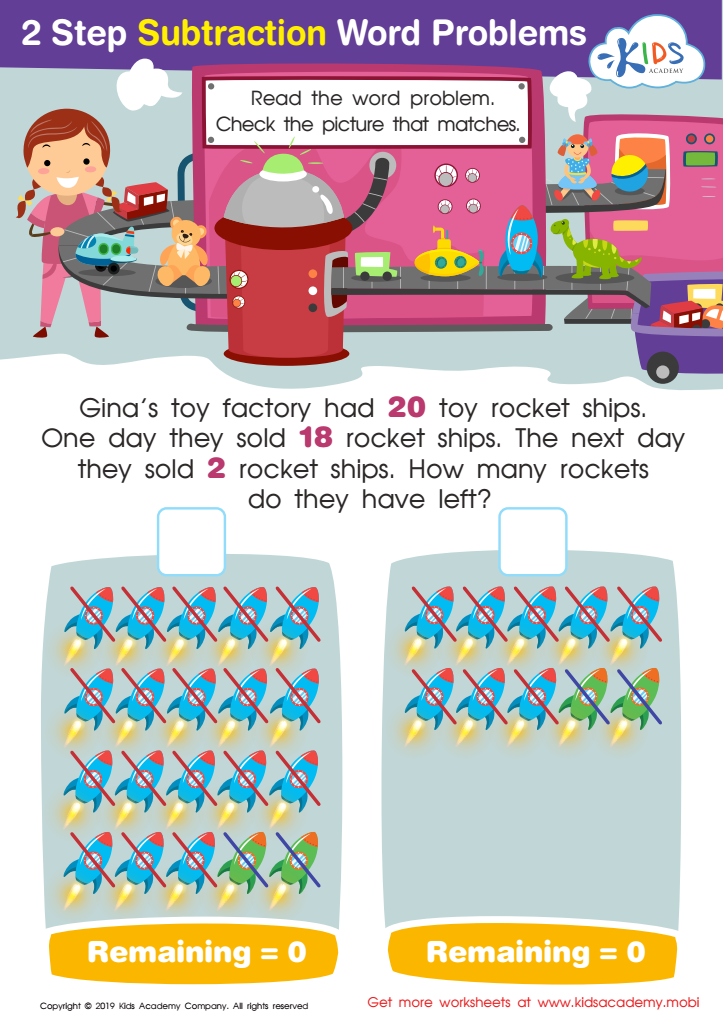

Step Subtraction Word Problems Worksheet
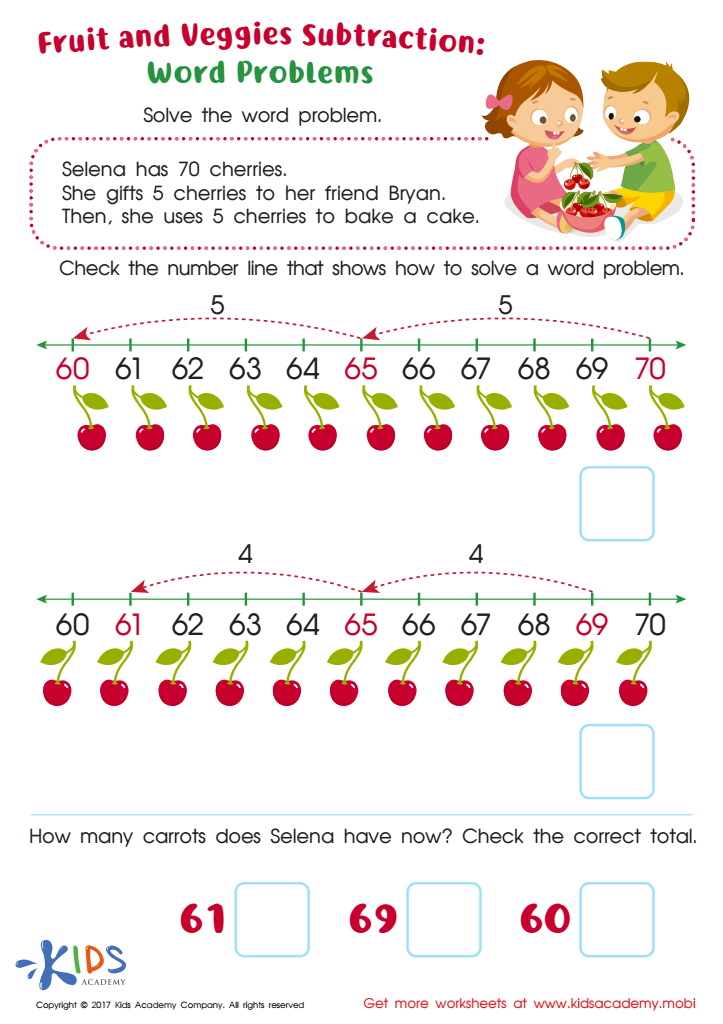

Subtraction Word Problems Free Printable
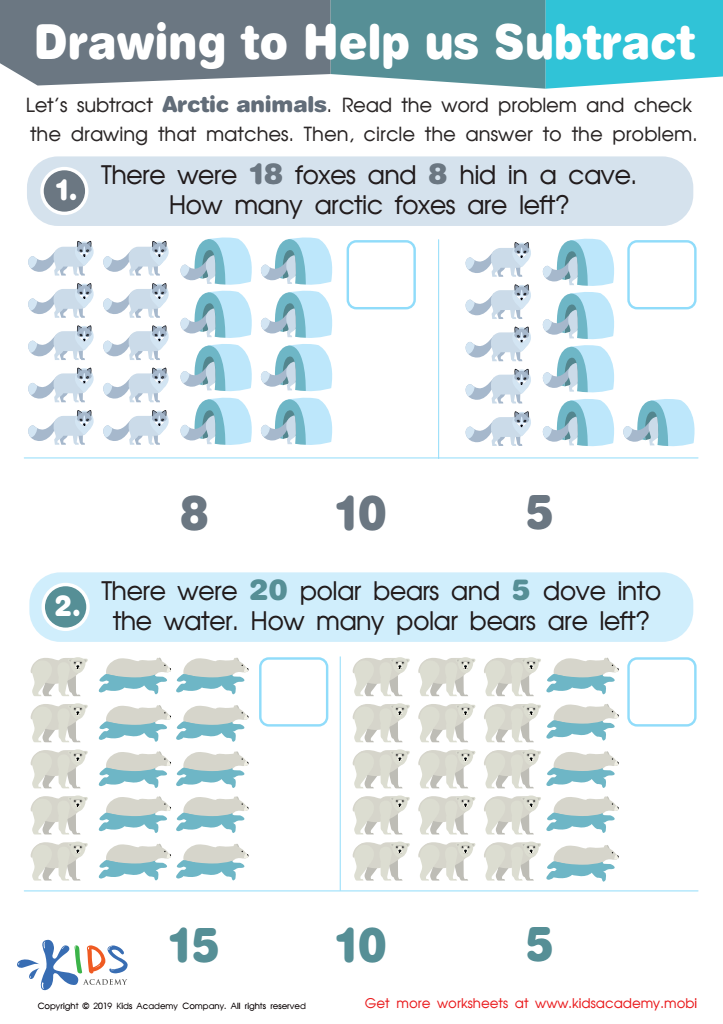

Drawing to Help Us Subtract Worksheet
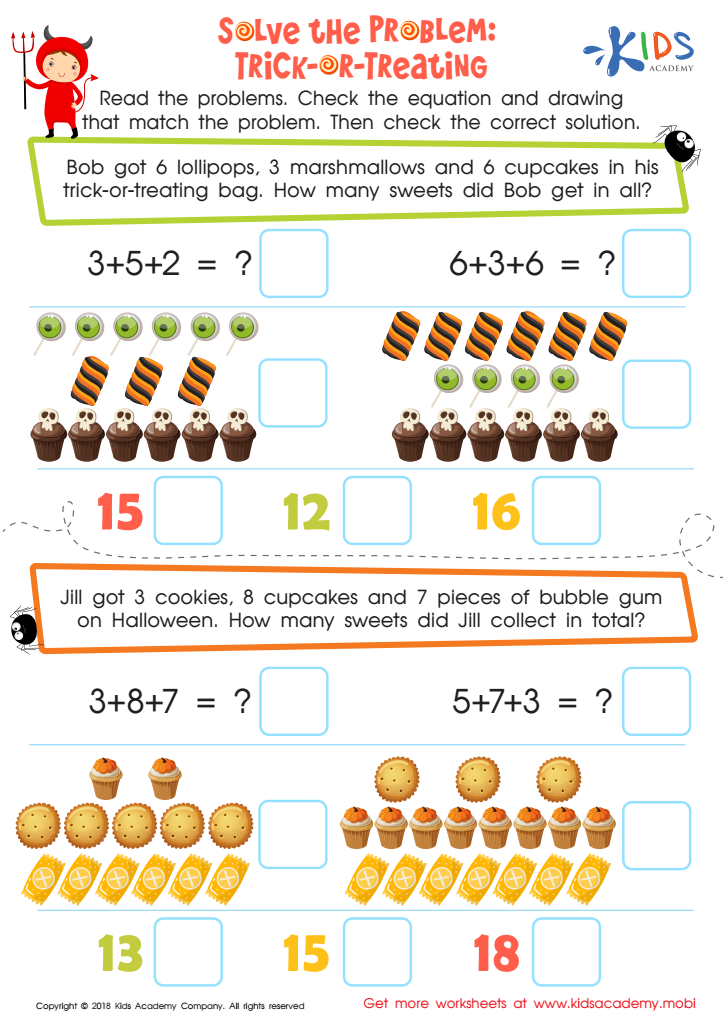

Solve the Problem: Trick–or–treating Worksheet
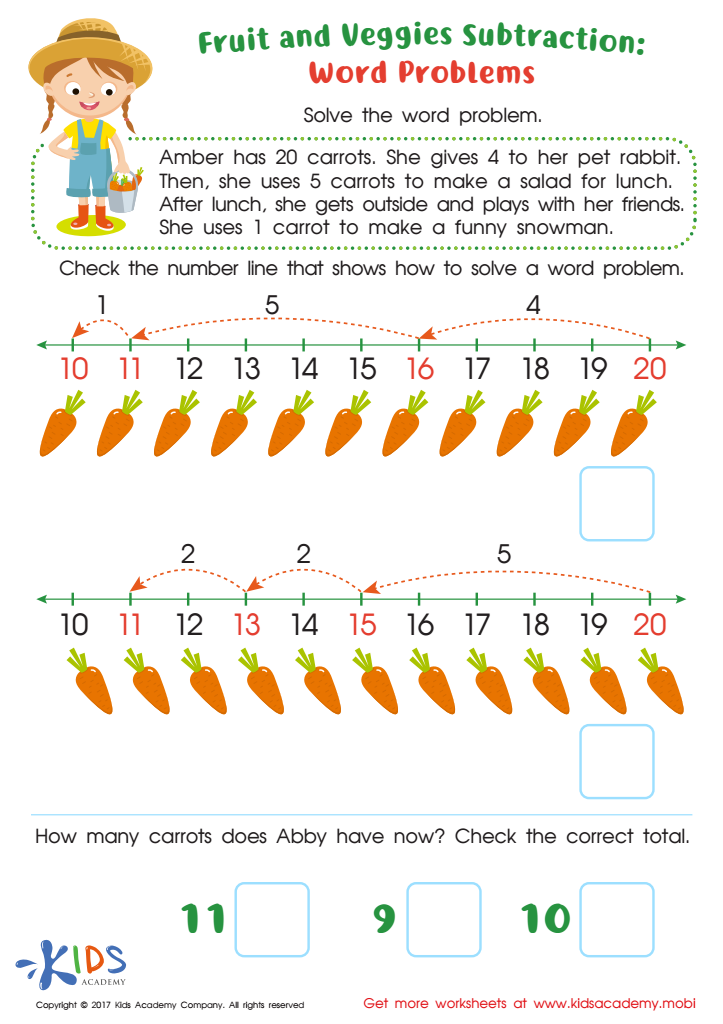

Subtraction Word Problems Printable
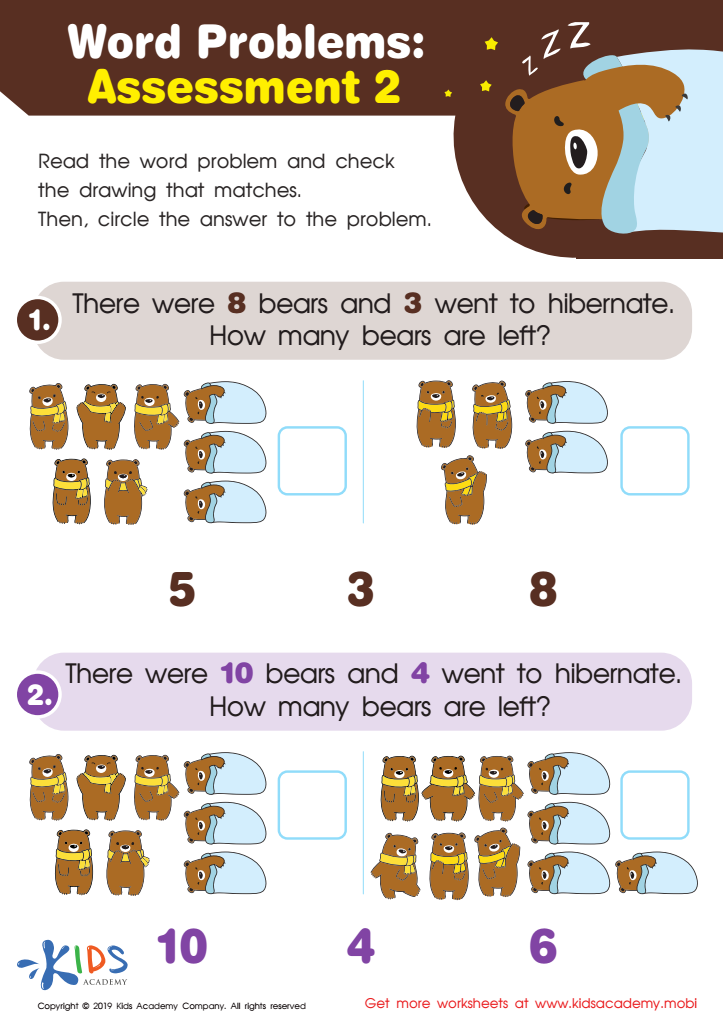

Word Problems: Assessment 2 Worksheet


Addition and Subtraction: Word Problems Worksheet
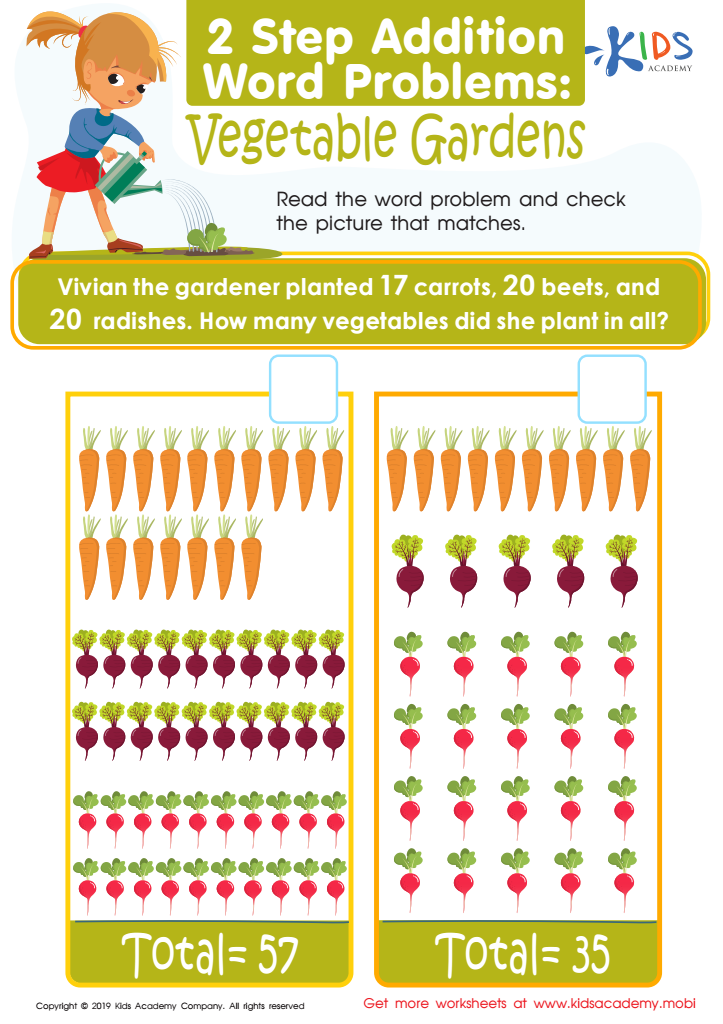

Vegetable Gardens Worksheet
Parents and teachers should prioritize Normal Addition and Subtraction Word Problems for children aged 6-8 because these tasks are fundamental in developing critical mathematical skills and reasoning. At this age, children are transitioning from simple arithmetic to applying their knowledge in real-world contexts. Word problems encourage them to interpret situations, identify relevant information, and choose the appropriate operation—skills that are crucial for problem-solving in everyday life.
Moreover, these problems promote mathematical language acquisition, helping children articulate their understanding and approaches to solving challenges. This strengthens their communication skills, allowing them to share their reasoning clearly with others, fostering collaboration and discussion.
Practicing word problems also highlights the significance of critical thinking; students learn to analyze what a question is asking rather than merely performing rote calculations. Successfully solving these problems builds confidence and resilience, as children experience the satisfaction of overcoming challenges.
In summary, by focusing on Normal Addition and Subtraction Word Problems, parents and teachers can effectively nurture a child's mathematical foundation, enhance their reasoning and communication abilities, and prepare them for more complex mathematical concepts in the future. Engaging with these problems supports both academic growth and real-life application, laying the groundwork for lifelong learning.
 Assign to My Students
Assign to My Students





